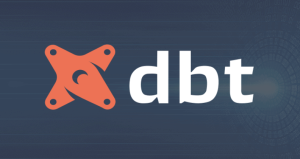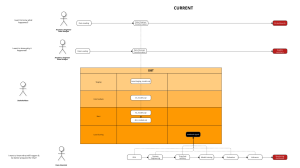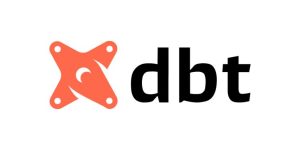
Leveraging artificial intelligence (AI) is now commonplace in marketing. Tools, platforms, and services put sophisticated audience targeting and segmentation tools at marketers’ fingertips, making it easier than ever to connect your products and services to customers.
As organizations grow more sophisticated in their adoption of AI, they can start to look beyond core uses cases and solutions such as the basic targeted advertising tools offered by Google and Facebook. Today, consistently finding new applications of data and smart algorithms is essential to building and maintaining a competitive advantage.
It’s important because if you’re simply using AI to do the same as everyone else then your results won’t differentiate you from your competitors in the eyes of potential customers. On top of this, core AI marketing tools (such as Adwords or Facebook advertising) are often described as “pay-to-win” – put simply, companies with bigger marketing budgets will generally get better results and take potential customers from smaller businesses. This is because they can afford to bid higher for the most important keywords.
Thinking smarter about alternative and emerging use cases for AI in marketing (or any business function) can help mitigate this. Here are a few ideas for getting ahead of the curve and ensuring your AI-driven marketing strategy is always evolving to become more efficient.

Intelligent advertising design
AI enables highly personalized design, meaning individual elements of advertising materials and marketing campaigns can be automatically tailored to specific audiences or even individuals. Individual elements of marketing campaigns – down to the style of design or the color schemes used – can be determined by algorithms to ensure they have the best likelihood of grabbing your audience’s attention and prompting further engagement. Algorithms can then assess the performance of different combinations of design elements and audiences and determine where tweaks could bring better results.
For example, it may be possible to determine that younger potential customers engage more readily with very visual adverts and marketing materials, whereas older ones prefer more text or in-depth details about products and services. Advertising creatives then only need to put together one version of their assets, which can then be tailored by AI algorithms and automatically distributed to the correct customer segments. Advertisers are already using tools that use natural language algorithms to create customized wording for sales copy.
AI helps us to recognize and categorize customer segments by their behavioral patterns, at scale. It can then optimize performance by monitoring how well different content performs against individual segments.
Image Recognition
Computer vision technology gives computer software the ability to “see” – meaning they can understand visual information. One opportunity for marketers here is to scan the millions of images that are uploaded to social media platforms every day in order to better understand how and where products or services are being used. This gives marketers new ways of assessing factors such as market penetration and brand awareness. It can also be used to identify influencers who already have an association with your brand, leading to more authentic engagements.
Another powerful use case is trend analysis. Here AI can help you pick out changing habits and behaviors that might influence how your customers and potential customers are engaging with providers in your market. As well as your own visual messaging, you can more easily assess the effectiveness of your competitors’ campaigns and judge how customers react to different moods, color palettes, and scenery.
Image recognition (along with NLP as mentioned above) can also be used to create automated descriptions for sales copy, from pictures of items. Additionally, you can use it to protect your brand, by having it automatically alert you to anyone who might be misappropriating your creative IP, branding, or messaging for their own ends!
Try-before-you-buy with AR
Ikea lets customers view products in their own homes – to check how a new sofa or table might fit with their existing décor – by offering augmented reality (AR) tools that superimpose computer-generated graphics onto real-world images. Here, AI is used to create realistic-looking composite images, generally in real-time, as the user is looking through the camera on their phone. In the same manner, beauty brands such as L’Oreal let users try out make-up and other products and see how they will look on them, using the same technology. While big players have been making this sort of functionality available to their customers for a while, it is increasingly offered “as-a-service” through platforms such as wearfits.com that make it usable by retailers of any size.
SEO research
Ranking high on search engine results is still a critical part of most marketing strategies; in fact, despite the rise of social media and influencer-driven marketing campaigns, search engine optimization is still often regarded as the biggest driver of marketing success. Research suggests that Google is the first stop on the journey to making up to 85% of buying decisions.
As e-commerce has grown to play a bigger part in our lives, SEO has evolved, and the most effective techniques for putting your website in the top results might have changed. In fact, some methods that previously would have achieved great results – such as link-building and keyword-cramming – may now result in your site being penalized, as algorithms get smarter at detecting when marketers are trying to “game the system.”
In SEO, “search volume” is an important concept as it tells us how many people are using particular words and phrases when searching for products or services they need. Today, some of the most sophisticated SEO routines involve machine learning algorithms to get a better understanding of the intent behind keyword usage, as well as the content of the searches. It can also be used to examine competitors’ SEO strategies in order to spot gaps that might exist in your own and develop SEO-friendly marketing content.
Intelligent website audits
Tracking the “flow” of visitors to your website and social channels is more important than ever in order to understand where “leaks” are occurring in your marketing funnel, causing potential customers to back out before they hit “buy.” AI-driven services automatically review your site and alert you to issues that could be impacting your conversion rate. Factors like slow-loading pages or large, unoptimized images and videos can quickly turn customers off, and even incur SEO penalties. Carrying out regular audits traditionally takes time and money, often requiring an expert third-party consultant. Increasingly however, it’s possible to do this with automated AI tools, leading to improved efficiency and higher sales.
Written by Bernard Marr
- Joon Solutions Achieves the Data Analytics Partner Specialization in Google Cloud Partner Advantage Program - May 27, 2022
- Top 5 Digital Transformation Trends in 2021 and Beyond - September 21, 2021
- 6 Biggest Data Strategy Mistakes Every Company Must Avoid - September 13, 2021



